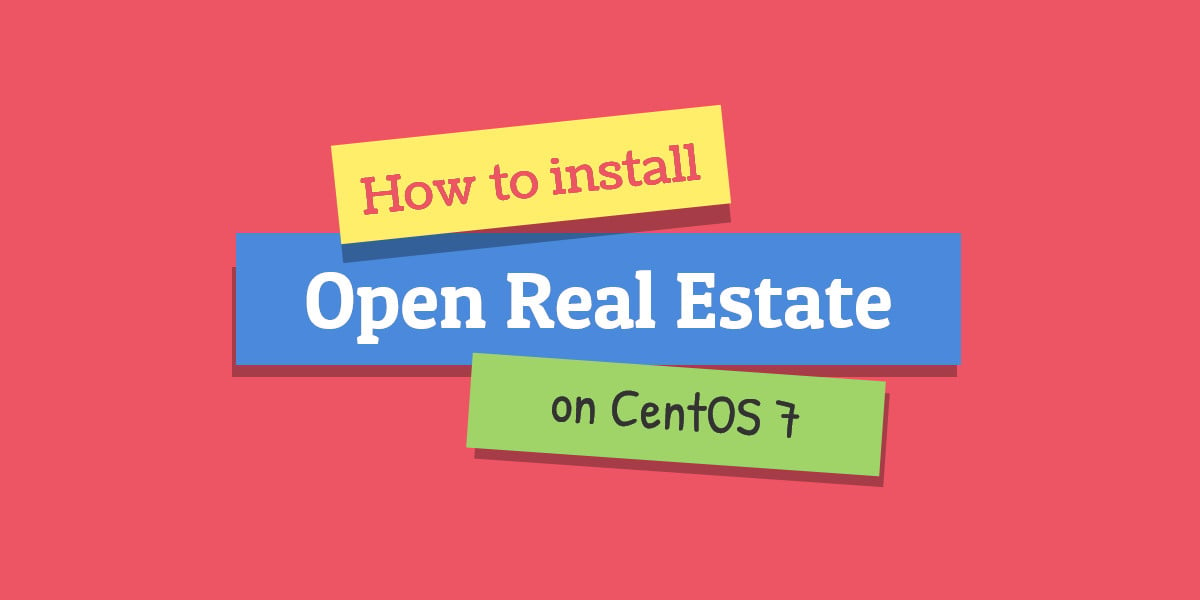Open Real Estate is a free and open source app that you can use to build websites for real estate agencies and realtors. It’s built on the Yii framework and it has all the features you’d need out of the box. It is fairly easy to install Open Real Estate on a CentOS 7 Cloud VPS. The installation process should take about 5-10 minutes if you follow the very easy steps described below.
Requirements
In order to run Open Real Estate on your VPS, the following requirements have to be met:
- MySQL or MariaDB
- PHP 5.3 +
- Apache 2 with mod_php module
In this tutorial, we will install the latest version of Open Real Estate on one of our CentOS 7 Cloud VPSes with MariaDB, PHP, and Apache (LAMP)
If you want to install Open Real Estate on Ubuntu, then follow this tutorial: How to install Open Real Estate on Ubuntu 14.04
Update the system
First of all login to your CentOS 7 Cloud VPS via SSH as user root:
ssh root@IP_Address
and make sure that it is fully up to date:
yum -y update
Install MariaDB server
Open Real Estate requires an empty database, so we will install the MariaDB server:
yum -y install mariadb mariadb-server
Once it is installed, start MariaDB and enable it to start on boot:
systemctl start mariadb systemctl enable mariadb
and run the mysql_secure_installation post-installation script to finish the MariaDB set-up:
mysql_secure_installation Enter current password for root (enter for none): ENTER Set root password? [Y/n] Y Remove anonymous users? [Y/n] Y Disallow root login remotely? [Y/n] Y Remove test database and access to it? [Y/n] Y Reload privilege tables now? [Y/n] Y
Once MariaDB is installed, login to the database server as user root, and create a database and a user for Open Real Estate:
mysql -u root -p MariaDB [(none)]> CREATE DATABASE orestate; MariaDB [(none)]> GRANT ALL PRIVILEGES ON orestate.* TO 'orestateuser'@'localhost' IDENTIFIED BY 'YOUR-PASSWORD'; MariaDB [(none)]> FLUSH PRIVILEGES; MariaDB [(none)]> \q
Do not forget to replace ‘YOUR-PASSWORD’ with a strong password.
Install Apache Web Server
Next, we will install Apache web server:
yum install httpd -y
start Apache and make it start on boot:
systemctl start httpd.service systemctl enable httpd.service
Install PHP 7
The default PHP version on CentOS 7 is PHP 5.4. In this tutorial, we will install PHP version 7.
Install Remi and EPEL repository packages:
rpm -Uvh http://rpms.remirepo.net/enterprise/remi-release-7.rpm rpm -Uvh https://dl.fedoraproject.org/pub/epel/epel-release-latest-7.noarch.rpm
Enable Remi PHP 7 repo:
yum-config-manager --enable remi-php70
and install PHP 7 and several PHP modules required by Open Real Estate by executing the following command:
yum -y install php php-mysql php-pecl-zip php-xml php-mbstring php-gd php-pdo
Next, open the PHP configuration file and increase the upload file size. You can find the location of the PHP configuration file by executing the following command:
php --ini |grep Loaded Loaded Configuration File: /etc/php.ini
In our case, we have to make changes to the /etc/php.ini file. We will increase the default upload limit to 100 MB. You can set the values according to your needs. Run the following commands:
sed -i "s/post_max_size = 8M/post_max_size = 100M/" /etc/php.ini sed -i "s/upload_max_filesize = 2M/upload_max_filesize = 100M/" /etc/php.ini
and restart the web server:
systemctl restart httpd
Install Open Real Estate
Download and extract the latest version of Open Real Estate on your server:
cd /opt && wget wget https://open-real-estate.info/files/OpenRealEstateV1.20.1_en.zip unzip OpenRealEstateV1.20.1_en.zip -d orestate mv orestate/ /var/www/html/orestate
All files have to be readable by the web server, so we need to set a proper ownership
chown -R apache:apache /var/www/html/orestate/
Create a new virtual host directive in Apache. For example, create a new Apache configuration file named ‘orestate.conf’ on your virtual server:
touch /etc/httpd/conf.d/orestate.conf nano /etc/httpd/conf.d/orestate.conf
Then, add the following lines:
<VirtualHost YOUR_SERVER_IP:80> ServerAdmin [email protected] DocumentRoot "/var/www/html/orestate/" ServerName yourdomain.com ServerAlias www.yourdomain.com ErrorLog "/var/log/httpd/yourdomain.com-error_log" CustomLog "/var/log/httpd/yourdomain.com-access_log" combined <Directory "/var/www/html/orestate/"> DirectoryIndex index.html index.php Options FollowSymLinks AllowOverride All Require all granted </Directory> </VirtualHost>
Restart the Apache web server for the changes to take effect:
systemctl restart httpd
Open your favorite web browser, navigate to http://your-domain.com/ and if you configured everything correctly the Open Real Estate installer should be starting. You should follow the easy instructions on the install screen inserting the necessary information as requested.
That is it. The Open Real Estate installation is now complete.
Of course, you don’t have to do any of this if you use one of our Linux Cloud VPS Hosting services, in which case you can simply ask our expert Linux admins to install Open Real Estate for you. They are available 24×7 and will take care of your request immediately.
PS. If you liked this post please share it with your friends on the social networks using the buttons on the left or simply leave a reply below. Thanks.

hi, I followed the instructions step by step, but I can not lift the site, only the apache test page comes out
best regards
Please check your virtualhost config and don’t forget to restart apache.
i have an issue where the webpage for installing the open real estate says that my permission is required to be 777 despite me changing the permission already and changed the owner to apache too.
If you have followed the tutorial you shouldn’t have any issues after you have changed the owner to apache.
You can check the files should be 644 and the folders 755
hi admin, does centos 8 able to install that?
It is possible to install the application on CentOS 8.
Getting the following eror on centos 8
tried googlign everywhere, only one result, and that person used 5.6 PHP, which I tried, same error